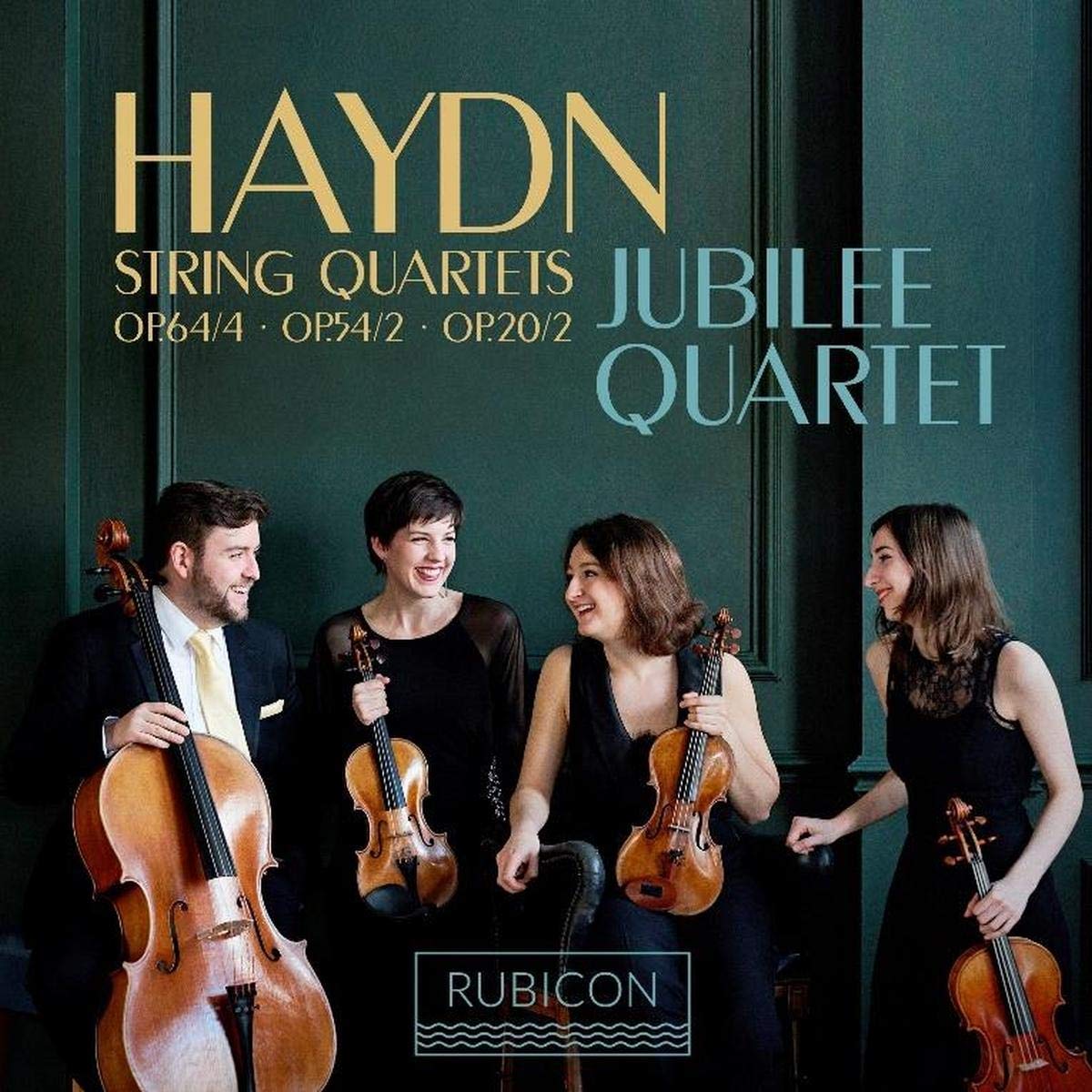Jubilee Quartet
65:41
Rubicon RCD 1039
op. 20/2, 54/2, 64/4
Although this is the debut recording of the Jubilee Quartet the sparse booklet gives no biographical details, so I’ll fill in the gap to save you going to their website. The ensemble was originally formed by students from the Royal Academy of Music in 2006, though it seems only first violinist Tereza Privraiska remains from its founding membership. Although they have chosen Haydn for their debut recording, the Jubilee is not a period instrument group, their collective sound having a noticeable edginess to ears more accustomed to period strings. Nevertheless, they bring a fine general sense of style to Haydn, the notes by second violinist Julia Loucks making clear they have thought deeply about the music.
The three works chosen cover much of Haydn’s career as a composer of the string quartet, from the second of the epoch-making op. 20 set dating from 1772 to the extraordinary C major, op 54/2 (1787) and the congenial op 64/4 in G (1790). It is now some time since the great Haydn scholar H. C. Robbins Landon rightly noted that it was with op 20 that the Classical string quartet reached full maturity, not – as so often suggested – those of op 33 (1781). All six quartets of op 20 almost explode with originality and invention, constantly breaching new boundaries, none more so than the C major included here. Among many innovatory features, we might note the Capriccio: Adagio (ii), cast in the form of an accompanied recitative in which the cello has the ‘vocal’ line followed by a heartfelt aria in which the first violin becomes the ‘singer’. Later elements of both are thrown together to create a disconcerting, fragmentary tapestry. The strong contrasts are well conveyed in the playing of the Jubilee, now gruffly dramatic, now tenderly soulful.
For Robbins Landon, Op 54/2 is one of Haydn’s ‘most original [quartet] constructions’, with an opening Vivace that has a feel of the epic, a brief sustained Adagio of extreme inward concentration – well caught by the Jubilees – and a fairly conventional minuet made memorable by its unexpectedly tense C minor trio section, its cries of pain searing themselves on the memory. Most striking of all is the final movement, which opens with a surprise, a dignified Adagio leading to a beautiful cantabile shared in dialogue between the first violin and cello. The expected quicker music (marked Presto) arrives to disrupt the conversation before the movement ends with distant memories of the cantabile, the rapt codetta played with real sensitivity.
Op 64/4 in G is a more relaxed work, with a warmly welcoming opening Allegro con brio in which the most interesting development takes place, not in the central section, but the recapitulation. The prize here is the slow movement (iii), marked Adagio – Cantabile e sostenuto, a ravishingly lovely movement of great inner serenity, the inner heart of which is again penetrated satisfyingly by the performers, who have the imagination to introduce some pleasing touches of portamento.
As suggested above these are agreeable and musical performances, with well-judged tempos and good balance between the instruments. The playing is technically capable, if perhaps without the final degree of finesse; some of the demanding high-lying writing for the first violin could be more finished. More importantly, the performances have a winning integrity of the kind that cannot be gainsaid.
Brian Robins
